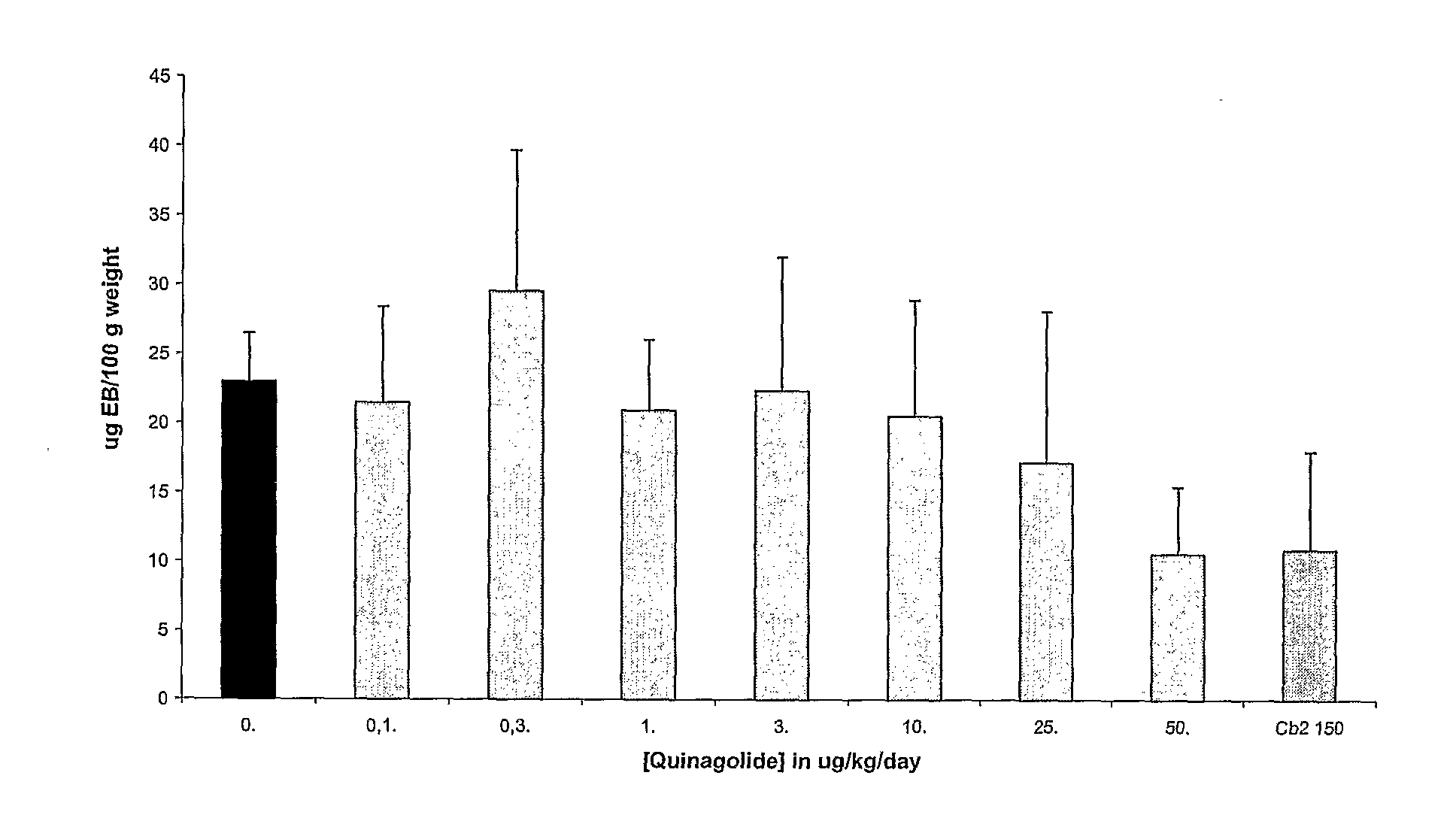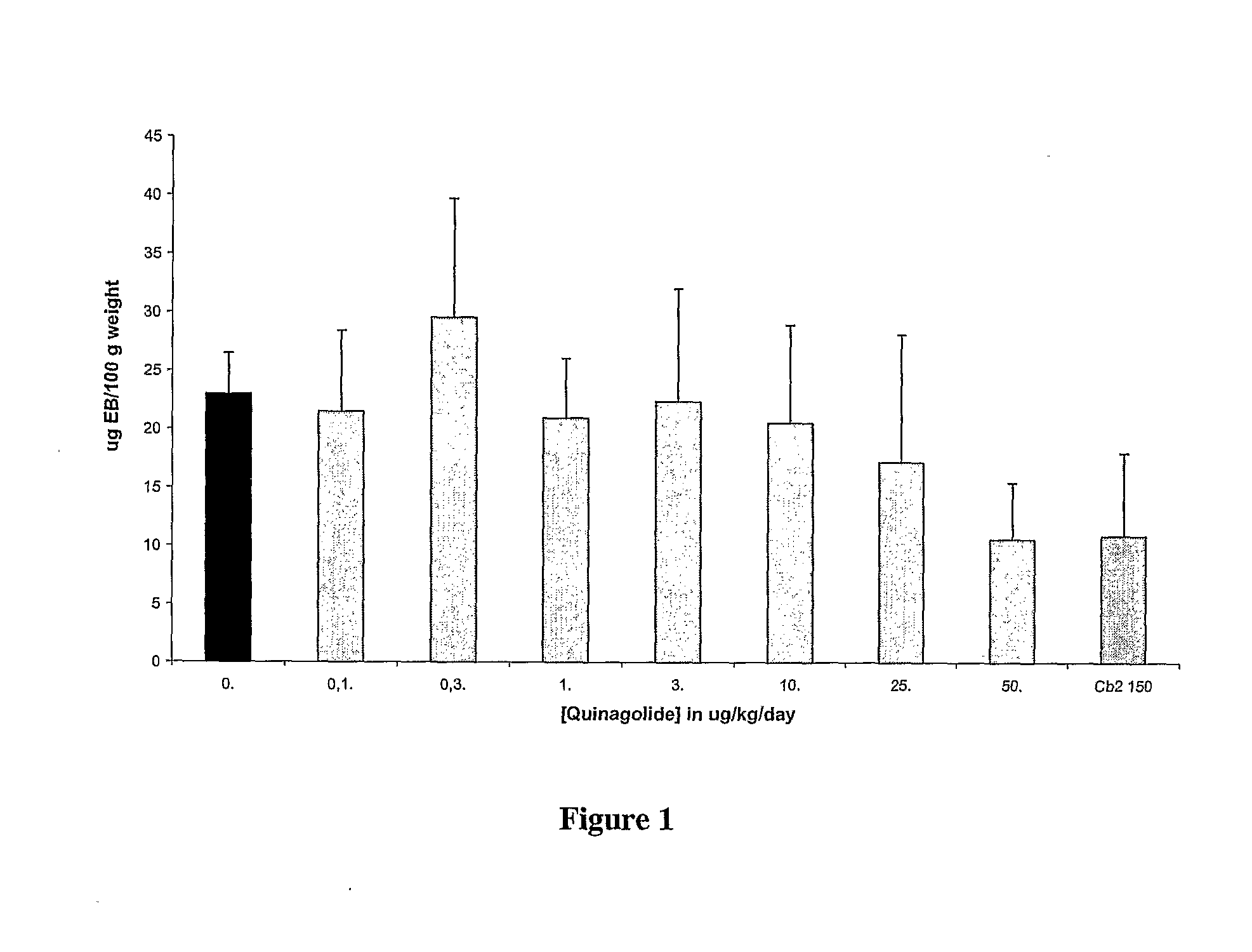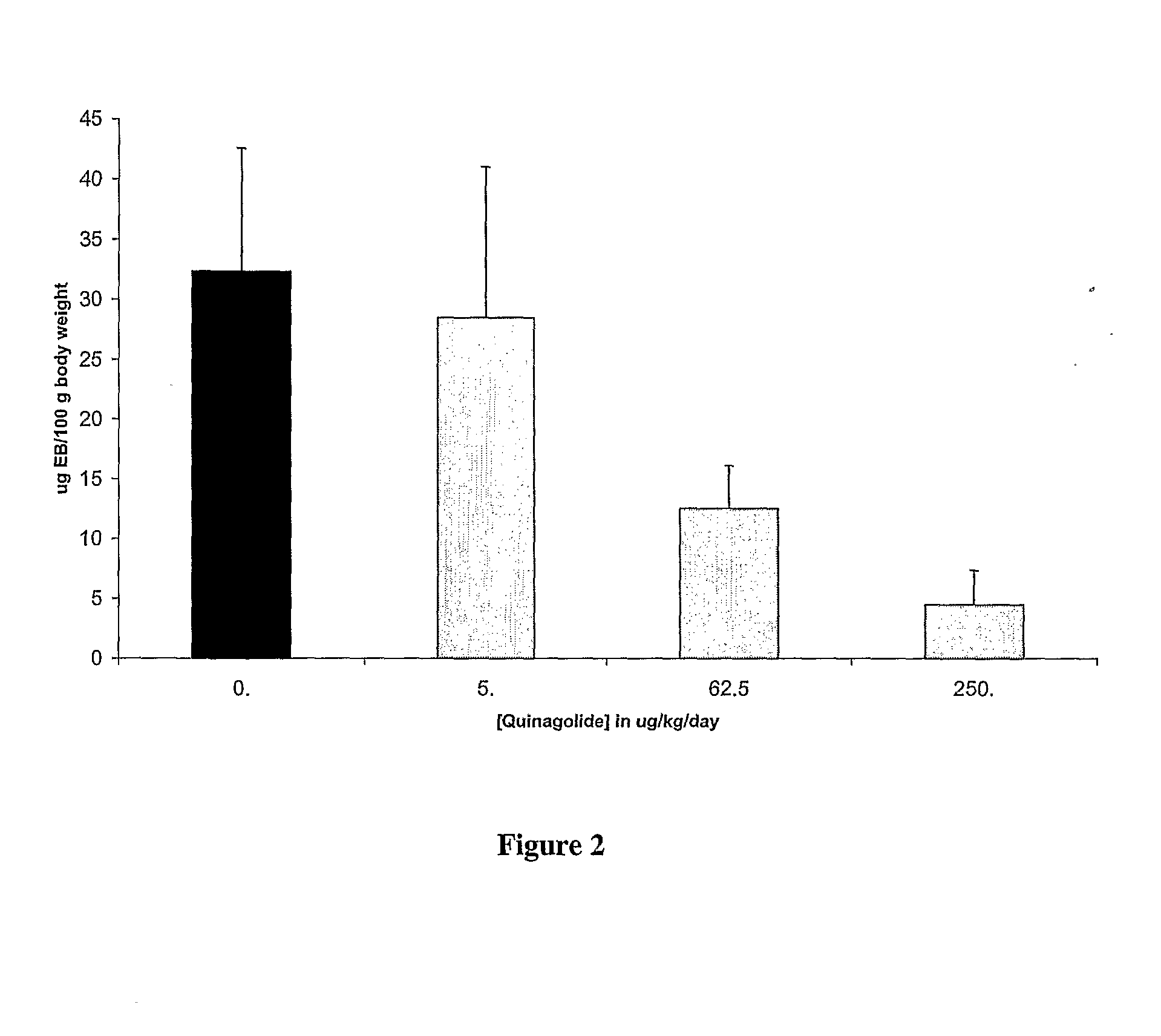Treatment or Prevention of Ovarian Hyperstimulation Syndrome (Ohss) Using a Dopamine Agonist
a technology of ovulation hyperstimulation and dopamine, which is applied in the field of treatment or prevention of ovulation hyperstimulation syndrome (ohss) using a dopamine agonist, can solve the problems of reducing fertility, premature ovarian failure (pof) in 10 percent of cases, and patient may also have fluid and electrolyte disturbances, so as to prevent ovarian hyperstimulation syndrome
- Summary
- Abstract
- Description
- Claims
- Application Information
AI Technical Summary
Benefits of technology
Problems solved by technology
Method used
Image
Examples
example 1
Genes Up- and Down-Regulated in OHSS Associated with Vascular Permeability and Use of Bromocriptine to Reduce Vascular Permeability Associated with OHSS)
[0099]Using microarray technology (Affymetrix, Inc. Santa Clara, Calif.), the pattern of gene up-and down-regulation was examined in control, hyperstimulated, and OHSS rat ovaries.
Methods
[0100]Drug Treatment. Immature female Wistar rats were employed. In the OHSS group (n=8), Pregnant Mare's Serum Gonadotropin (PMSG) was administered at 10 IU / day for 4 days, followed by hCG (30 IU) on the fifth day. In the mild (i.e., ovarian stimulation) group (n=8), 10 IU of PMSG was administered followed 2 days later by administration of 10 IU of hCG. In the control group, 1 IU of PMSG was administered followed by 1 IU of hCG 48 hrs later.
[0101]Vascular Permeability Measurement. Vascular permeability was measured 48 hours following hCG administration. 0.2 ml of 5 mM Evans Blue stain was injected via the femoral vein. After 30 minutes, the periton...
example 2
Prevention or Treatment of OHSS Using Quinagolide (Norprolac®)
[0107]For prevention of OHSS in patients undergoing fertility treatment or IVF involving the administration of gonadotropin hormones, it is expected that administration of the dopamine agonist quinagolide will prevent an increase in vascular permeability. Without being limited to a particular mechanism, it is expected that this will occur as a result of quinagolide binding to dopamine D2 receptors, resulting in internalization of VEGF-R2, thereby preventing binding of VEGF-A to VEGF-R2 and phosphorylation of VEGF-R2.
[0108]Dosage and Administration. Quinagolide can be given orally over the course of about 8 days, starting the day of hCG administration for fertility or IVF treatment. The dosage should be about 0.025-0.6 mg / day, preferably about 0.05 to about 0.3 mg / day (i.e., the dose similar to that required to inhibit lactation).
[0109]Alternatively, for prevention, cabergoline is administered during controlled ovarian sti...
example 3
Prevention or Treatment of OHSS Using Cabergoline (Dostinex)®
[0112]Prevention of OHSS. For prevention of OHSS in patients undergoing fertility treatment or IVF involving the administration of gonandotrophic hormones, it is expected that administration of the dopamine agonist cabergoline will prevent an increase in vascular permeability. Without being limited to a particular mechanism, it is expected that this will occur as a result of cabergoline binding to dopamine D2 receptors, resulting in internalization of VEGF-R2, thereby preventing binding of VEGF-A to VEGF-R2 and phosphorylation of VEGF-R2.
[0113]Dosage and Administration. For prevention of OHSS, cabergoline may be given over the course of about 8 days, starting the day of hCG administration for fertility or IVF treatment. The dosage should be about 0.05 to 1.0 mg / day (i.e., the total dose over about 8 days is similar to the dose necessary per day to inhibit lactation, which is about 0.5 mg per day).
[0114]Alternatively, for p...
PUM
| Property | Measurement | Unit |
|---|---|---|
| diameter | aaaaa | aaaaa |
| diameter | aaaaa | aaaaa |
| pH | aaaaa | aaaaa |
Abstract
Description
Claims
Application Information
 Login to View More
Login to View More - R&D
- Intellectual Property
- Life Sciences
- Materials
- Tech Scout
- Unparalleled Data Quality
- Higher Quality Content
- 60% Fewer Hallucinations
Browse by: Latest US Patents, China's latest patents, Technical Efficacy Thesaurus, Application Domain, Technology Topic, Popular Technical Reports.
© 2025 PatSnap. All rights reserved.Legal|Privacy policy|Modern Slavery Act Transparency Statement|Sitemap|About US| Contact US: help@patsnap.com



